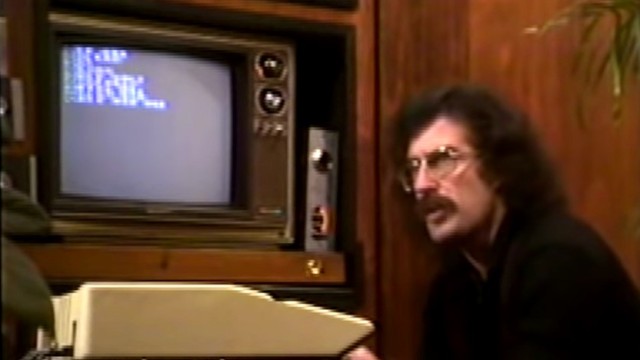
John Draper
1943  [USA]
[USA]
Known as Captain Crunch, he is an American programmer and phreaker, known within hacker culture for his research into telephone operation in the early 1970s, which allowed him to make long-distance calls for free.
He is well-known in the programming and cybersecurity worlds and often leads a nomadic lifestyle.
Draper is the son of a United States Air Force engineer. As a child, he built a home radio station using discarded military components.
He was frequently bullied at school and briefly received psychological treatment.
After college, Draper enlisted in the U.S. Air Force in 1964.
While stationed in Alaska, he helped fellow service members make free phone calls home by devising access to a local telephone switchboard.
In 1967, while stationed at Charleston Air Force Station in Maine, he created WKOS (W—"chaos"), a pirate radio station in nearby Dover-Foxcroft, but shut it down after a legally licensed radio station, WDME, objected.
After his stint in the army, he moved to Silicon Valley and worked briefly for National Semiconductor as an engineering technician and at Hugle International, where he worked on early designs for a wireless telephone.
While testing a pirate radio transmitter he had built, Draper broadcast a phone number to listeners seeking feedback to gauge the station's reception. A call from fellow pirate radio operator Denny Teresi resulted in a meeting that introduced Draper to the world of "phone phreaks," people who study and experiment with telephone networks and sometimes use that knowledge to make free calls.
Teresi and several other phone phreaks were blind.
And upon learning of Draper's knowledge of electronic design, they asked him to build a multi-frequency tone generator, known as a blue box, a device for emitting audio tones used to monitor the telephone network. The group had previously used an organ and cassette recordings of tones to make free calls.
Among the phone phreaks was a blind boy named Joe Engressia, who had taken the nickname Joybubbles and had perfect pitch, allowing him to identify frequencies accurately.
He told him that a toy whistle that came in Cap'n Crunch cereal boxes emitted a tone at exactly 2600 hertz, the same frequency used by AT&T telephone lines to indicate that a trunk was available to route a new call, allowing them to enter operator mode.
Draper was arrested in 1972, accused of defrauding telephone companies.
In the mid-1970s, he met and taught his techniques to Steve Jobs and Steve Wozniak, who later founded Apple Computer but who for a time dedicated themselves to building and selling blue boxes. In fact, Draper was briefly an official Apple employee, creating a modem for the Apple II. The modem was never marketed, in part because Draper was arrested again in 1977. While in prison, he wrote EasyWriter, the first word processor for the Apple II computer.
The vulnerability, which had been known and exploited since 1960, was limited to call-routing switches that relied on in-band signaling. After 1980 and the introduction of Signaling System No. 7, most US telephone lines operated almost exclusively with out-of-band signaling, with signals transmitted over a separate system.
This change rendered toy whistles and blue boxes useless for phreaking purposes.
Today, whistles are considered collectible souvenirs from a bygone era.
But their popularity was such that the magazine 2600: The Hacker Quarterly was named after the audio frequency.